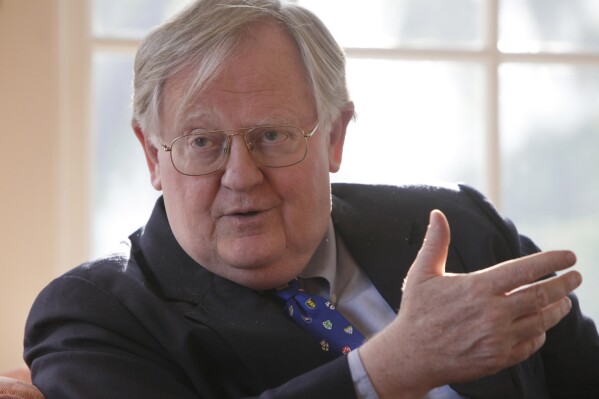US utility pledges more transparency after lack of notice it empowered CEO to make plant decisions
NASHVILLE, Tenn. (AP) — The nation’s largest public utility on Thursday pledged to be more transparent after it took months to disclose that a general budget vote by its board last year also gave the CEO the final decision over several proposed natural gas power plants.
The Tennessee Valley Authority’s board announced the transparency changes during its quarterly meeting in Nashville. The decision followed an August meeting in which the federal utility’s board cast the budget vote that quietly gave President and CEO Jeff Lyash the final say over the projects, including the replacement of the aging coal-fired Kingston Fossil Plant with a natural gas plant.
The public didn’t find out about those provisions until documents with specific details were released several months later, some via public records request, said Amanda Garcia, a senior attorney with the Southern Environmental Law Center.
The decision stood in contrast to a more publicized vote in May 2023 when the board, with a new majority selected by President Joe Biden, took back the final decision-making authority on the Kingston plant. Lyash had been granted the authority for Kingston and the natural gas switch at Cumberland Fossil Plant, both in Tennessee, when the board had a majority picked by former President Donald Trump.



“One of the changes the chair asked me if I would do, which I can, is to take the resolutions, precisely what is being voted by the board, and make those resolutions publicly available, get them on the website rapidly after the meeting,” Lyash told The Associated Press.
Board member Michelle Moore, who was absent but had a statement read on her behalf, said some decisions are better delegated to the CEO because they span years and multiple board cycles, but others require board decisions because of “exceptional, regional and even national significance.” Additionally, Lyash said the board maintains oversight authority when the CEO is the decision maker.
TVA’s plans to open more natural gas plants have drawn the ire of advocates who want an aggressive move away from fossil fuels and into solar and other renewables. They note that even with six of nine board members appointed by Biden, TVA is off track to meet the Biden administration’s goal of eliminating carbon pollution from power plants by 2035 to try to limit the effects of climate change. Several of its proposals for new natural gas plants have received criticism from the U.S. Environmental Protection Agency, including a warning that its environmental review of the Kingston project doesn’t comply with federal law.
Southern Environmental Law Center staff attorney Trey Bussey said the transparency changes should have been in place “before TVA decided to spend billions of dollars on new gas plants and pipelines — not after,” adding that the board can still halt the buildout of gas plants. In April, the law center said it recently found out that the board had given decision-making power back to the CEO.
Although TVA has not embraced renewables, the utility still says a majority of its energy is carbon-free because 42% comes from nuclear and another 9% is from hydropower. Purchased wind and solar make up another 4% of its energy portfolio. The utility currently produces 1 megawatt of its own solar and has 20 megawatts of battery storage. The Kingston project includes another 3-4 megawatts of solar and 100 megawatts of battery storage. TVA estimates that the new gas plant will produce 1.68 million tons (1.52 million metric tons) of greenhouse gases a year, noting that it is a steep decline from Kingston’s current emissions.
TVA says its power mix was at 55% last fiscal year, with a goal of net-zero emissions by 2050. The utility has said it intends to build 10,000 megawatts of solar by 2035. Its solar goals have hit some snags, including supply chain issues, interest rates and land costs, according to Lyash.
As the region grows in population and TVA looks to add power plants, the utility says it also has a goal of reducing consumption by 30% over the next decade through energy efficiency and demand response programs.
TVA provides power to 10 million people across seven Southern states.
Disclaimer: The copyright of this article belongs to the original author. Reposting this article is solely for the purpose of information dissemination and does not constitute any investment advice. If there is any infringement, please contact us immediately. We will make corrections or deletions as necessary. Thank you.






